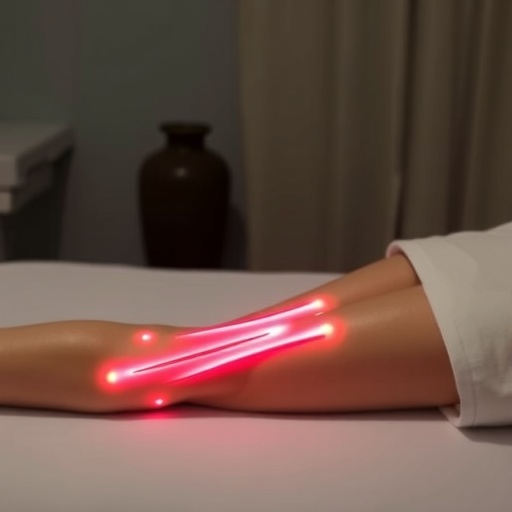EPFL scientists have been able to measure the ultrashort time delay in electron photoemission without using a clock. The discovery has important implications for fundamental research and cutting-edge technology.
When light shines on certain materials, it causes them to emit electrons. This is called "photoemission" and it was discovered by Albert Einstein in 1905, winning him the Nobel Prize. But only in the last few years, with advancements in laser technology, have scientists been able to approach the incredibly short timescales of photoemission. Researchers at EPFL have now determined a delay of one billionth of one billionth of a second in photoemission by measuring the spin of photoemitted electrons without the need of ultrashort laser pulses. The discovery is published in Physical Review Letters.
Photoemission
Photoemission has proven to be an important phenomenon, forming a platform for cutting-edge spectroscopy techniques that allow scientists to study the properties of electrons in a solid. One such property is spin, an intrinsic quantum property of particles that makes them look like as if they were rotating around their axis. The degree to which this axis is aligned towards a particular direction is referred to as spin polarization, which is what gives some materials, like iron, magnetic properties.
Although there has been great progress in using photoemission and spin polarization of photo-emitted electrons, the time scale in which this entire process takes places have not been explored in great detail. The common assumption is that, once light reaches the material, electrons are instantaneously excited and emitted. But more recent studies using advanced laser technology have challenged this, showing that there is actually a time delay on the scale of attoseconds.
Time without a clock
The lab of Hugo Dil at EPFL, with colleagues in Germany, showed that during photoemission, the spin polarization of emitted electrons can be related to the attosecond time delays of photoemission. More importantly, they have shown this without the need for any experimental time resolution or measurement — essentially, without the need for a clock. To do this, the scientists used a type of photoemission spectroscopy (SARPES) to measure the spin of electrons photo-emitted from a crystal of copper.
"With lasers you can directly measure the time delay between different processes, but it is difficult to determine when a process starts – time zero," says Mauro Fanciulli, a PhD student of Dil's group and first author on the paper. "But in our experiment we measure time indirectly, so we don't have that problem – we could access one of the shortest timescales ever measured. The two techniques [spin and lasers], are complementary, and together they can yield a whole new realm of information."
The information about the timescale of photoemission is included in the wavefunction of the emitted electrons. This is a quantum description of the probability of where any given electron can be found at any given time. By using SAPRES, the scientists were able to measure the spin of the electrons, which in turn allowed them to access their wavefunction properties.
"The work is a proof of principle that can trigger further fundamental and applied research," says Hugo Dil. "It deals with the fundamental nature of time itself and will help understand the details of the photoemission process, but it can also be used in photoemission spectroscopy on materials of interest." Some of these materials include graphene and high-temperature superconductors, which Dil and his colleagues will be studying next.
###
This work involved a collaboration between EPFL Institute of Physics, the Paul Scherrer Institut (Swiss Light Source), the Ludwig Maximillian University, D-81377 Munich, the University of West Bohemia, and the University of Bielefeld. It was funded by the Swiss National Science Foundation (SNSF), the Bundesministerium für Bildung und Forschung (BMBF), the Deutsche Forschunsgsgemeinschaft (DFG), and the Ministry of Education of the Czech Republic.
Reference
Mauro Fanciulli, Henrieta Volfová, Stefan Muff, Jürgen Braun, Hubert Ebert, Jan Minár, Ulrich Heinzmann, J. Hugo Dil. Spin polarization and attosecond time delay in photoemission from spin degenerate states of solids. Physical Review Letters 08 February 2017.
Media Contact
Nik Papageorgiou
[email protected]
41-216-932-105
@EPFL_en
http://www.epfl.ch/index.en.html
############
Story Source: Materials provided by Scienmag




